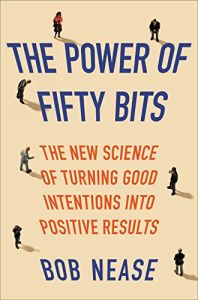Join getAbstract to access the summary!

Join getAbstract to access the summary!
Bob Nease
The Power of Fifty Bits
The New Science of Turning Good Intentions into Positive Results
HarperBusiness, 2016
What's inside?
Follow seven simple strategies to exert your influence over people’s attention and behavior.
Recommendation
In this entertaining presentation, behavioral scientist Bob Nease describes six basic strategies plus one “overarching über strategy” for influencing your customers’ behavior. The human brain processes “10 million bits of information” each second, but the deliberate, decision making part of the brain runs at only 50 bits per second. As a result, people’s brains are wired for inattention and inertia. Understanding how to address these twin cognitive challenges changes everything. Nease offers seven strategies for capturing your customers’ focus, explains how to apply his methods and tells you why they work. His prose is accessible, but you can see his academic rigor in the endnotes, which detail his research and resources. getAbstract recommends Nease’s insights and pragmatic tactics to managers, salespeople, marketers, and HR and IT professionals.
Summary
About the Author
Bob Nease, PhD, an expert on applying behavioral science to health care, retired as chief scientist for Express Scripts, a Fortune 25 health care company. He was an associate professor of internal medicine at Washington University in St. Louis and an assistant professor of community and family medicine at Dartmouth Medical School. He has written more than 70 peer-reviewed papers, as well as for Fortune and Huffington Post, and is a regular contributor to FastCompany.
















Comment on this summary